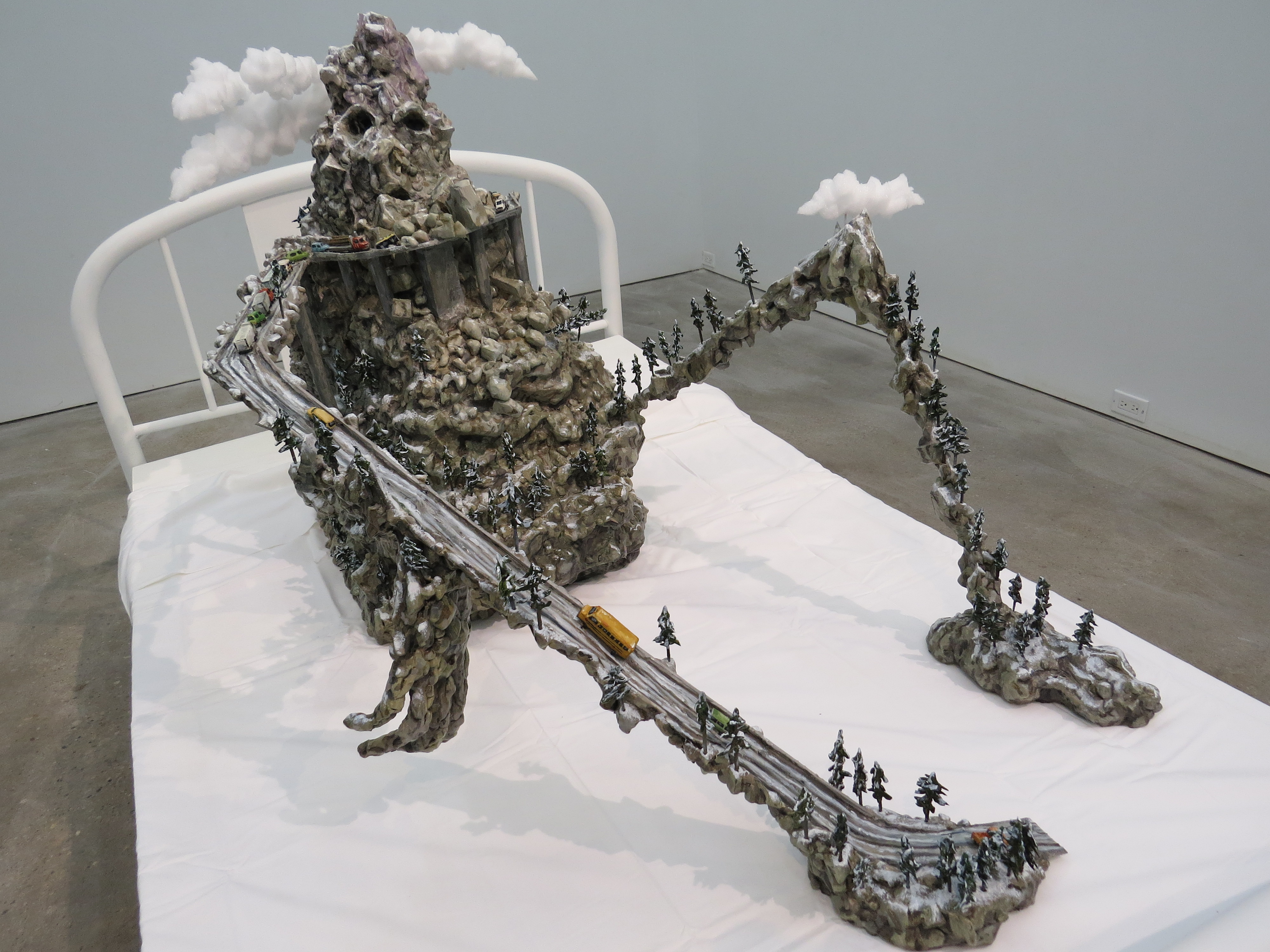
Obstructed (2016)
Jude Griebel
Artist
Kimberly Flowers's journey began in July 2014 when she was diagnosed with tongue cancer. Three months later, she underwent a 12-hour surgery that resulted in part of her tongue being removed.
She then underwent reconstructive surgery for her tongue, a trisectomy, a bilateral neck dissection and 30 radiation treatments.
"I had to learn to speak, swallow and eat all over again," says Flowers, who lost her voice for three months due to the radiation. "The anatomy of my neck had completely changed. I went from being tube fed through my nose to purees to semi-solid food. Even today, I still can't eat certain things."
As part of her recovery - and as soon as she was feeling well enough - Flowers started attending support groups. She then began mentoring other cancer patients and undertaking research. Eventually, she found support in an unusual place: a research project at the School of Dentistry that blends experiences and art together.
see me, hear me, heal me: Transforming understandings of patients' experiences with head and neck cancer is a project that brings together a cross disciplinary team of scholars, artists, health care providers and patients. Working collaboratively, and using innovative arts-based inquiry, the team explores the experiences of head and neck cancer patients over the course of their illness, treatment and recovery through contemporary art.
Led by principal investigator and assistant professor at the School of Dentistry, Minn Yoon, patients and their stories really form the heart of the project.
"I remember in one of the first sessions, I was shocked to see all these medical practitioners in the same room and wanting to hear about our experiences," says Flowers. "This project is really dear to my heart. It helped me process and identify emotions that I was unable to address through counselling. I remember leaving the session feeling so overwhelmed from the support and compassion I felt as a patient."
The project connected artists with patients and together they explored fears, anxiety, depression, hope and all the complex emotions that come from head and neck cancer treatment and the recovery journey.
The resulting works of art have been featured in a number of exhibitions. FLUX: Responding to Head and Neck Cancer ran at dc3 Art Projects and the McMullen Galleryat Stollery Children's Hospital last year. This year, it is being shown at the Chicago International Museum of Surgical Sciences.
"As a researcher, but more so as a human being, the project has moved me and has really achieved more than I had ever imagined," says Yoon. "Our patient partners as well as the truly interdisciplinary team deserve the credit. The project has shown me the importance of fostering the humanistic qualities of academia, health and art. It also demonstrates the power of relationships and how authentic connections with community can enrich us individually and as a collective."
Words, says Flowers, simply were not enough to capture the complexities of experiencing head and neck cancer.
"Sharing my story helped me process things psychologically and emotionally. The sense of community was there and it created a safe space for me to open up," says Flowers. "It's been a huge part of my healing process."
For more information and to support the project, visit www.seemehearmehealme.com.